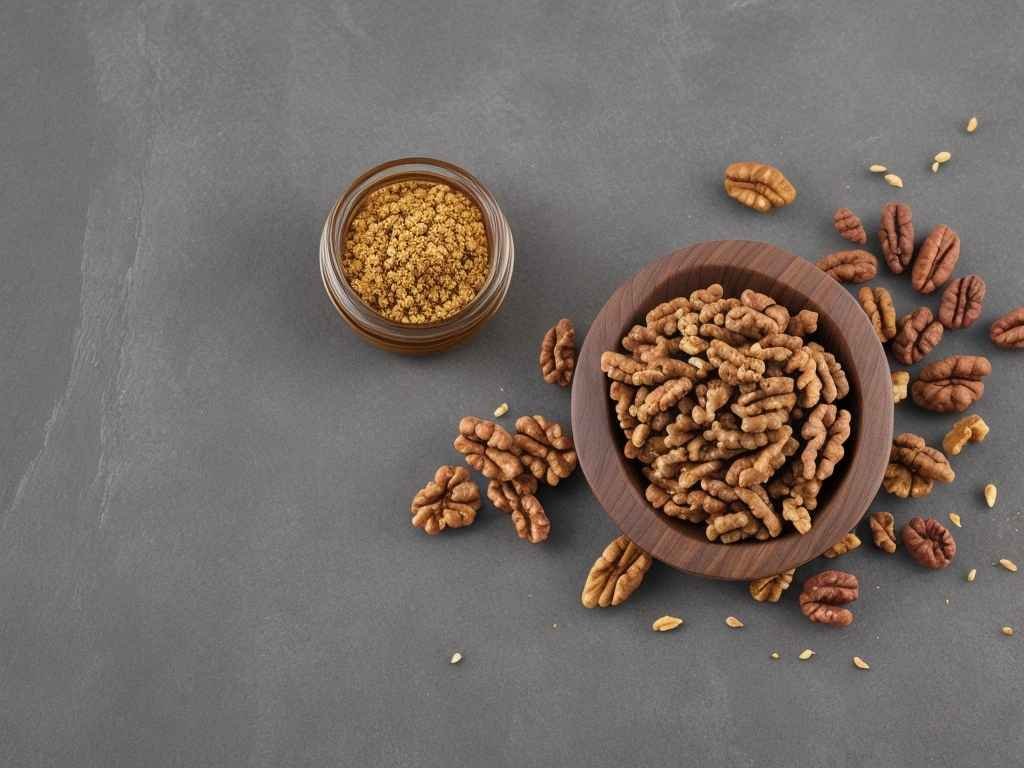Walnut oil is a versatile and natural wood finish that enhances the beauty of wood while providing protection. The process of applying coats of walnut oil involves several steps and considerations to achieve the best results. This expanded guide delves deeper into the intricacies of using walnut oil for wood finishing.
Composition and Properties
Walnut oil is extracted from the nuts of the walnut tree (Juglans regia). It is a drying oil, meaning it hardens upon exposure to air, forming a protective layer on the wood. Unlike some synthetic finishes, walnut oil is non-toxic, making it ideal for items that come into contact with food.
Explore: How much does walnut oil cost ?

Types of Walnut Oil
Cold-Pressed Walnut Oil:
- Extracted using mechanical pressing without heat.
- Retains more of the natural properties and nutrients.
- Preferred for food-contact surfaces.
Heat-Treated Walnut Oil:
- Processed with heat to enhance drying and durability.
- Suitable for general wood finishing.
- Preparation for Applying Walnut Oil
- Selecting the Wood
New Wood:
- Ensure the wood is dry and properly seasoned.
- Select wood with a fine, tight grain for a smoother finish.
Previously Treated Wood:
- Remove any old finish or varnish using a stripper or sandpaper.
- Clean the surface thoroughly to remove dust and debris.
- Surface Preparation
Sanding:
- Start with a medium grit sandpaper (120-150) to smooth rough areas.
- Progress to a fine grit sandpaper (220 or higher) for a smooth surface.
- Sand in the direction of the grain to avoid scratches.
Cleaning:
- Use a tack cloth or vacuum to remove all sanding dust.
- Wipe the surface with a damp cloth and allow it to dry completely.
Explore: How long does walnut oil last?
Application Process
Initial Application: Building the Foundation
First Coat:
Application: Pour a generous amount of walnut oil onto the wood. Use a cloth or brush to spread it evenly.
Soaking Time: Allow the oil to soak in for 20-30 minutes.
Wiping Off: After soaking, wipe off the excess oil with a clean, dry cloth.
Drying Time: Let the wood dry for at least 24 hours in a well-ventilated area.
Second Coat:
Application: Apply a thinner coat of walnut oil, ensuring even coverage.
Soaking Time: Let it soak in for 20 minutes.
Wiping Off: Wipe off any excess oil.
Drying Time: Allow another 24 hours of drying.
Third Coat:
Application: Apply a light coat, focusing on areas that may appear dry.
Soaking Time: Let it soak for 15-20 minutes.
Wiping Off: Wipe off excess oil.
Drying Time: Dry for another 24 hours.

Additional Coats (if necessary):
Continue applying additional coats if the wood appears to need more oil or for a deeper finish.
Always allow proper drying time between coats.
Curing and Final Touches
Full Curing
Walnut oil requires time to cure fully. This process can take several days to a few weeks, depending on environmental conditions.Avoid heavy use or exposure to water until the oil has fully cured.
Buffing the Surface
Once fully cured, buff the wood surface with a soft cloth to achieve a smooth, satin finish.For added sheen, a light buffing with fine steel wool (0000 grade) can be done, followed by wiping with a clean cloth.
Explore: How Long Walnut Oil Take to Dry
Maintenance and Reapplication
Regular Use Items
Frequency: Reapply every 6-12 months.
Procedure: Clean the surface, apply a thin coat, allow it to soak, then wipe off the excess.
High Wear Items
Frequency: Reapply every 3-6 months.
Procedure: Follow the same steps as for regular use.
Outdoor Furniture
Frequency: Reapply every 2-3 months due to exposure to weather.
Procedure: Ensure the wood is clean and dry, apply a thin coat, and allow sufficient drying time.
Advanced Tips for Optimal Results
Temperature and Humidity:
Ideal application conditions are moderate temperatures and low humidity.
High humidity can slow drying and curing times.
Rubbing Technique:
Rubbing the oil into the wood with a circular motion can help achieve better penetration.
Ensure even application to avoid blotchy or uneven areas.
Storage and Handling:
Store walnut oil in a cool, dark place to prevent it from becoming rancid.
Properly dispose of oil-soaked rags to prevent spontaneous combustion.
Combining with Other Finishes:
Walnut oil can be combined with beeswax for a softer, more lustrous finish.
After the final coat of oil has cured, apply a thin layer of melted beeswax and buff to a shine.
Troubleshooting Common Issues
Sticky Surface:
Cause: Excess oil not wiped off properly.
Solution: Wipe the surface with a cloth dampened with mineral spirits and reapply a thin coat.
Uneven Finish:
Cause: Uneven application or insufficient sanding.
Solution: Sand lightly with fine-grit sandpaper and reapply the oil.
Dry Patches:
Cause: Wood absorbing oil unevenly.
Solution: Apply additional coats in those areas until the wood no longer absorbs the oil.
Conclusion
Applying walnut oil is a straightforward process that enhances the beauty and durability of wood. With proper preparation, application, and maintenance, walnut oil can provide a long-lasting, food-safe finish that brings out the natural richness of the wood grain. Whether you’re treating a cutting board, a piece of furniture, or an outdoor item, understanding the nuances of walnut oil application will help you achieve the best possible results. Regular care and attention will ensure your wood items remain protected and visually appealing for years to come.
FAQs
1. How many coats of walnut oil should I apply to my wood furniture?
Generally, 2 to 3 coats of walnut oil are recommended for wood furniture. The exact number of coats depends on the type of wood and the desired finish. For a deeper, more durable finish, additional coats may be applied.
2. Is one coat of walnut oil sufficient for my project?
One coat of walnut oil might provide a basic level of protection and enhancement to the wood, but it is usually not enough for optimal durability and finish. Multiple coats help ensure better absorption and a more even, protective layer.
3. How long should I wait between coats of walnut oil?
It’s best to wait at least 24 hours between coats of walnut oil. This allows adequate time for the oil to penetrate the wood and for the surface to dry before applying another coat.
4. Can I apply too many coats of walnut oil?
While multiple coats can enhance the finish and protection, applying too many coats can result in a sticky surface. Usually, 3 to 4 coats are sufficient. Beyond that, the wood may not absorb additional oil effectively.
5. How can I tell if my wood needs another coat of walnut oil?
If the wood looks dry or dull after applying a coat and waiting for it to cure, it may benefit from another coat. Additionally, if water does not bead up on the surface, another coat might be necessary.


2 Comments
[…] Explore: How many coats of walnut oil? […]
[…] Explore: How many coats of walnut oil? […]